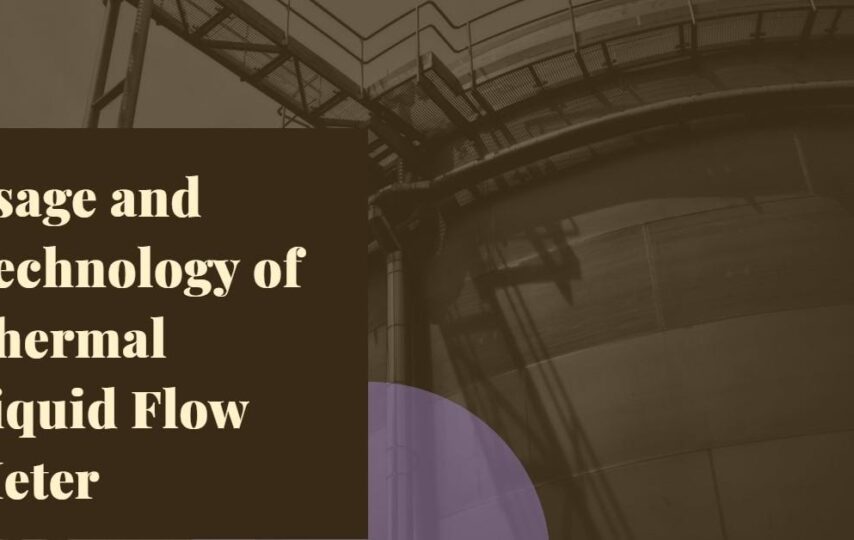Thermal sensors measure the mass flow rate of gases as well as liquids. They use the thermal properties in gauging the flow rate. Do you wish to know about the thermal sensors? In this guide, we will tackle the usage and technology of thermal sensors. Well, sit back and take a sip as we get you past that.
The theory of operation
The flowmeter is mostly applied to regulate low gas flows. Thermal mass flow sensors work by adding a known amount of heat to the flowing gas. Then, an associated heat change is measured. It has two parts; two heat sensors and an electric heater. The heater can either protrude to the fluid or be external to the pipe. Electric heater adds a fixed amount of heat in the direct-heat version. The resistance heat detectors measure the temperature rise. When the fluid flows through the pipe, the amount of heat is held constant.
Did you know that thermal sensors represent 2% of global flow meter sales? Well, at least now, you know. The heat lost from the sensor depends on the sensor design. The flowmeter has many designs. The designs include;
Bypass-Type Design
The bypass type of thermal sensor was made to gauge larger flow rates. The bypass version has a thin-walled tube and two heat detectors. The two detectors heat the pipe as well as gauge the temperature rise. If the flow process is off, the heaters raise the bypass-tube heat. When that happens, there is a uniform heat distribution along the tube.
But, if there is flow taking place, the gas particles carry the heat downstream. In return, the heat is shifted in the direction of the flow. A Wheatstone bridge changes the electric signal to a mass flow rate relative to the heat change. The bypass-tube helps to lower the power use. Its small size also enables us to raise the speed of response of the gauge.
On the opposite, the small size of the bypass-tube is a pain in the neck. You need to add filters to prevent plugging. The bypass-tube is mainly used in the semiconductors processing sector. It has low upkeep. Also, it contains electronic packages in the units. These packages help in computer interfacing as well as chart recording. The modern units are at hand, and they include the auto control valve and a controller. Despite all those great features, this design has a limitation. It requires a high-pressure drop for it to form laminar flow.
Heated tube design
The heated tube flowmeter has two working modes, and one mode gauges the mass flow. It does that by keeping the power input constant. Also, the mode monitors the heat change. The second mode keeps the heat split steady. It also gauges the amount of power needed to maintain it. Unlike the fist mode, this mode gives a much higher rangeability. The main reason for its invention was to protect the heater and sensor from rust. If the sensors are placed externally on the pipe, the sensing elements respond at a slow pace. That leads to a nonlinear link in the middle of the mass flow and heat change. The pipe wall heat is usually higher near the heater. But there is no split in the middle of the wall and fluid heat when the heater is far away.
Ultrasonic Flow Meter
An ultrasonic flow meter is a sophisticated device used for measuring the flow rate of liquids or gases within a pipeline. It operates on the principle of sending ultrasonic waves through the flowing substance and analyzing the changes in wave frequency to determine the velocity of the flow. This technology offers non-intrusive and highly accurate flow measurements, making it essential in various industries such as water management, oil and gas, and industrial processing.
Air velocity probes
Probe-style liquid flow meters keep the heat difference between two RTDs on the sensor tube. They are used to gauge airflows. One unique thing about the velocity probes is that they are not sensitive to a moderate amount of dust. When there is a raised gas speed, many currents are needed to keep the heat difference.
Probe-style has another version known as a venturi-type thermal sensor. That liquid flow meter places a heated sensor at the lowest diameter of a venturi flow meter element. It also establishes a heat compensation probe downstream. For the heat to be uniform, an inlet screen mixes the flow. The version works well with both gas and liquid. It has a low-pressure drop.
There is a flow switch version you can find in the market. That switch has two heat sensors at the tip, and it detects high or low flow, which is about 5%.
Hot-wire Anemometers
The hot-wire anemometers have a fine-wire element that you heat with electricity. The first mechanical anemometer was invented to gauge the speed of the wind. There is tungsten that works as a wire material. That is due to its ability to resist a high-heat coefficient. If you place it in a moving gas, the wire tends to cool. The rate at which the wire cools is relative to the flow rate. There exist two types of solid-state electronic circuits. The two types are; constant-power and constant-heat. One of those types controls the circuitry of the heated sensing element.
Constant-power anemometers
This type of flowmeter lacks a feedback system. It has several limitations such as;
- Temperature compensation limit
- Unstable zero-flow reading
- Slow temperature and velocity response
- The heat typically relates to the flow rate.
Constant-temperature
Unlike the constant-power, the constant-heat version is more popular. That is due to the high-frequency response and its applicability to gas or liquid flows. It also has a low electronic noise level. Last but not least, it has good immune from sensor burnout. That mostly happens when airflow drops unexpectedly.
The constant-temperature sensor keeps a constant heat difference between a heated sensor and a reference sensor. Usually, the amount of power needed to keep the change is measured as a sign of the mass flow.
Merits of using thermal sensors
- Thermal sensors are not affected by pressure variations. That is because of the thermal flow meter counts molecules.
- The thermal sensor has a high turn-down ratio. Thermal mass flow sensors measure a great range of flow rates, which is unlike other sensor technologies.
- Offer an easy calibration verification routine. Some thermal sensor types ensure there is an accurate performance of the meter.
- They have a low-pressure drop. That is due to its ability to measure inches of water.
- Mass flow is gauged using thermal sensors.
- The flowmeter detects gases.
- They have easy installation methods. Some thermal sensors, such as the Sage model, are easy to install. There is no cutting into the pipe to insert parts.
- They are a bit cheap. The thermal sensor lowers the cost of installation.
- Thermal flowmeters have high low-end sensitivity.
- They consist of stable parts.
Cons of thermal sensors
- Thermal flowmeters calibrate a specific fluid in mind. Thus, it is hard to swap one liquid for another. Swapping leads to errors. Avoid using impure or mixtures that are new to the sensor.
- Liquids used should have stable temperatures. Change in the temperature of the liquids gives wrong readings.
- Pipes often have build-ups or deposits on the sides. The build-ups affect the sensibility of the sensors.
Conclusion
Thermal flowmeters are handy. It has a lot of merits, such as ease of installation and low-pressure drop. When using thermal sensors, you should be cautious. It would be best if you did not use the flowmeter with acidic fluids. That’s because they can damage the liquid flow meter. Also, thermal sensors are not fit for fluids with varying and unknown bits. If you follow the above details, you are good to go.
About Author:
Naman Modi is a Professional Blogger, SEO Expert & Guest blogger at proteusind.com. He is an Award-Winning Freelancer & Web Entrepreneur helping new entrepreneurs launch their first successful online business.







